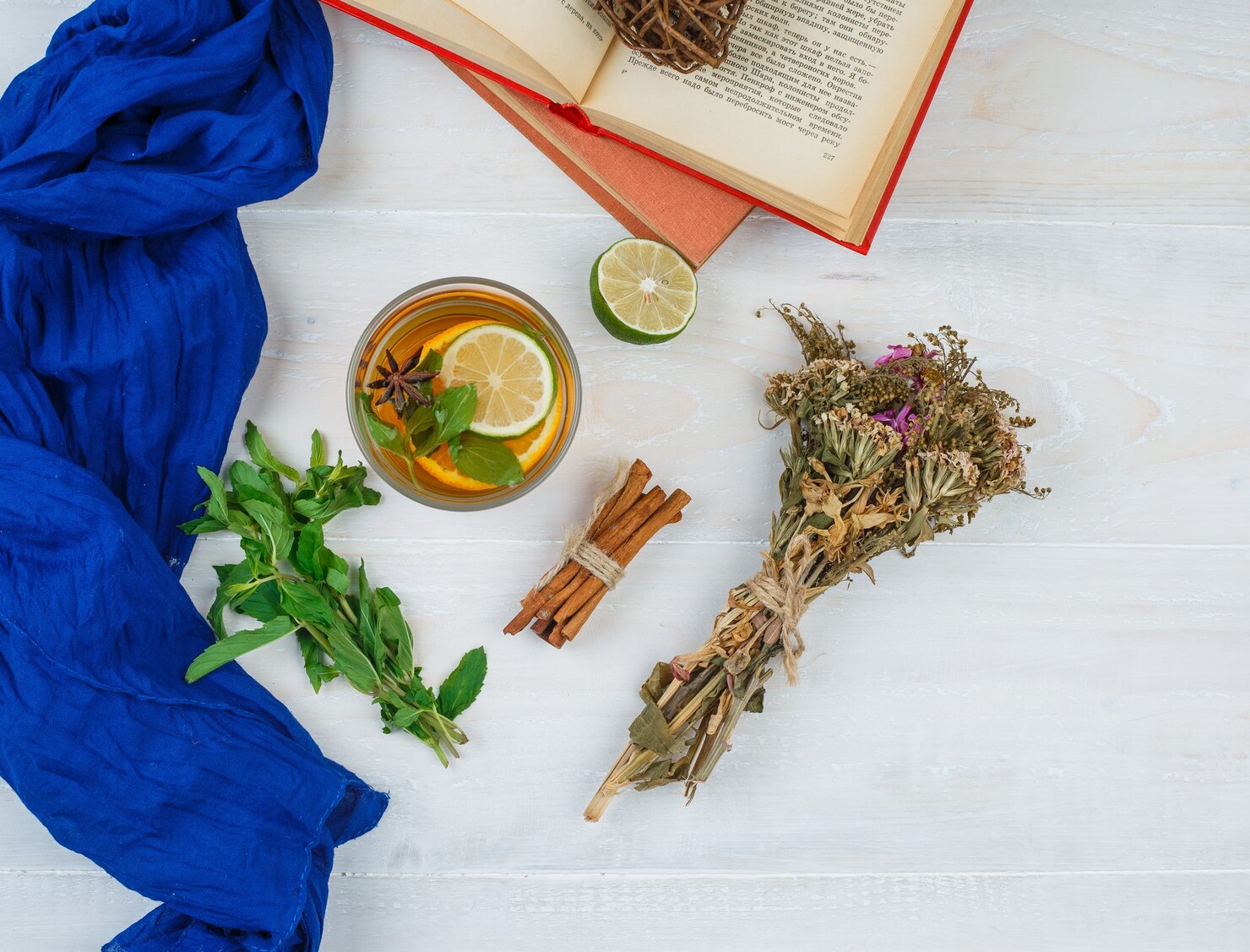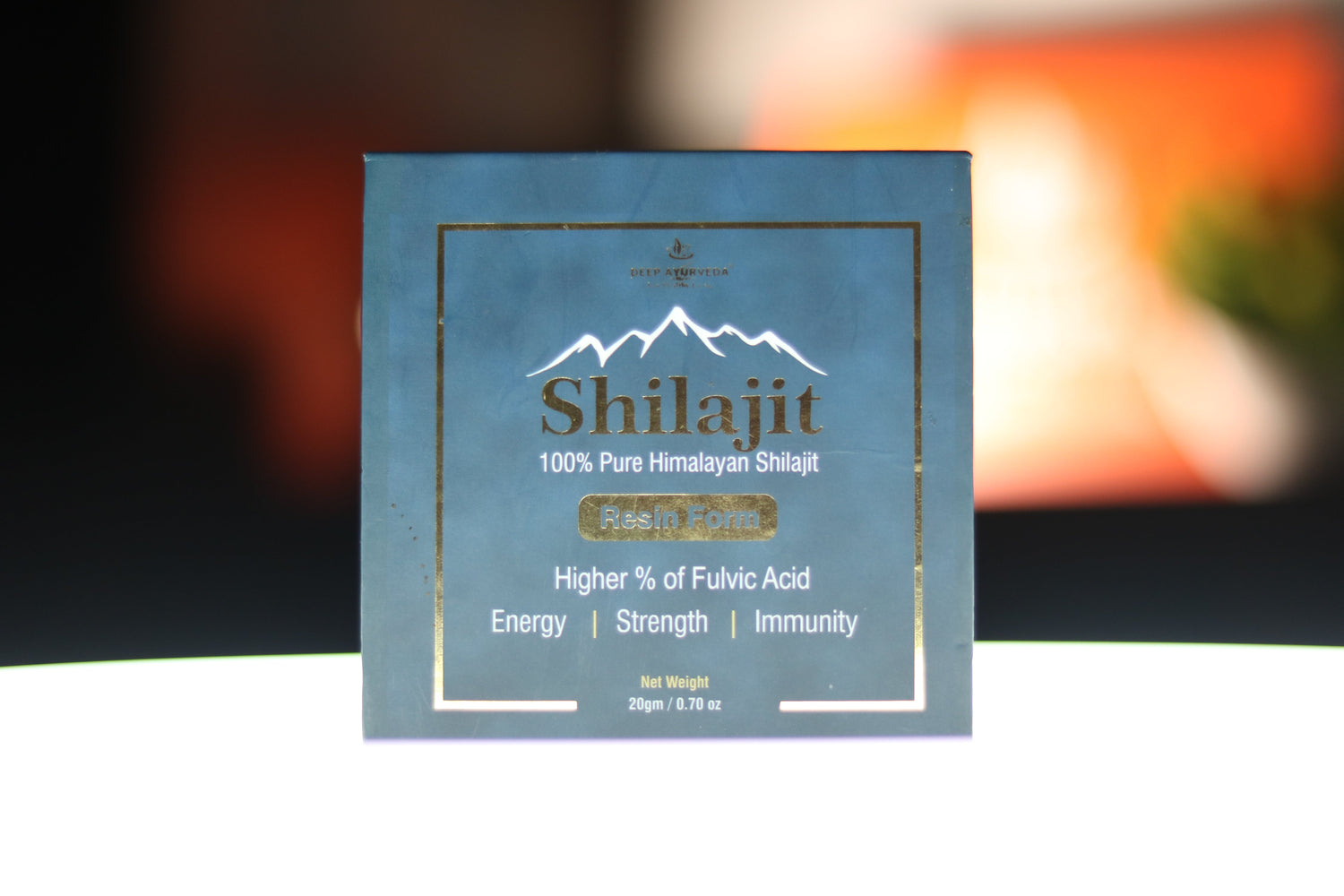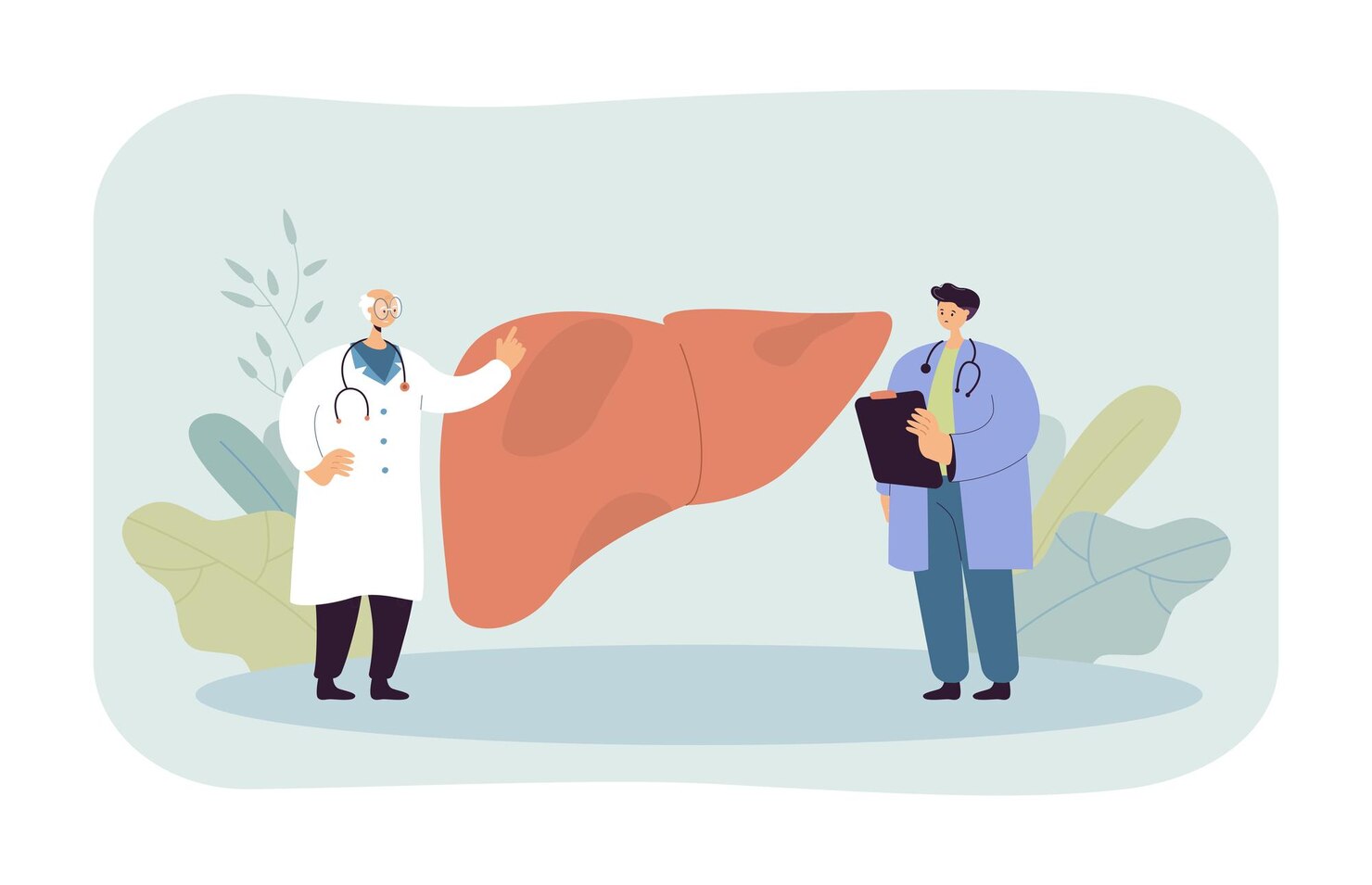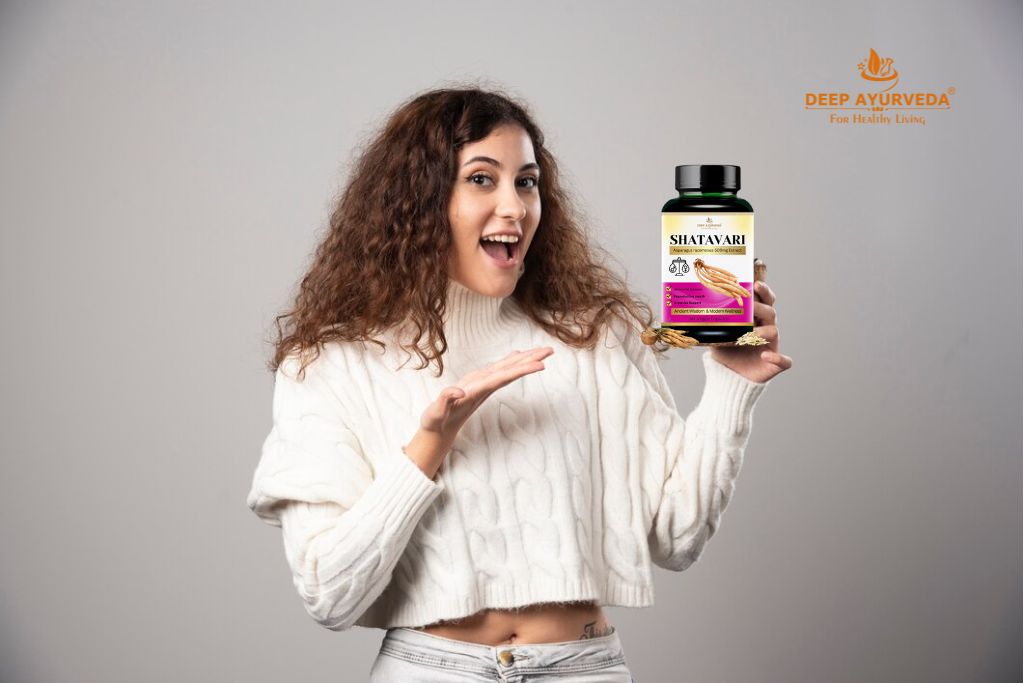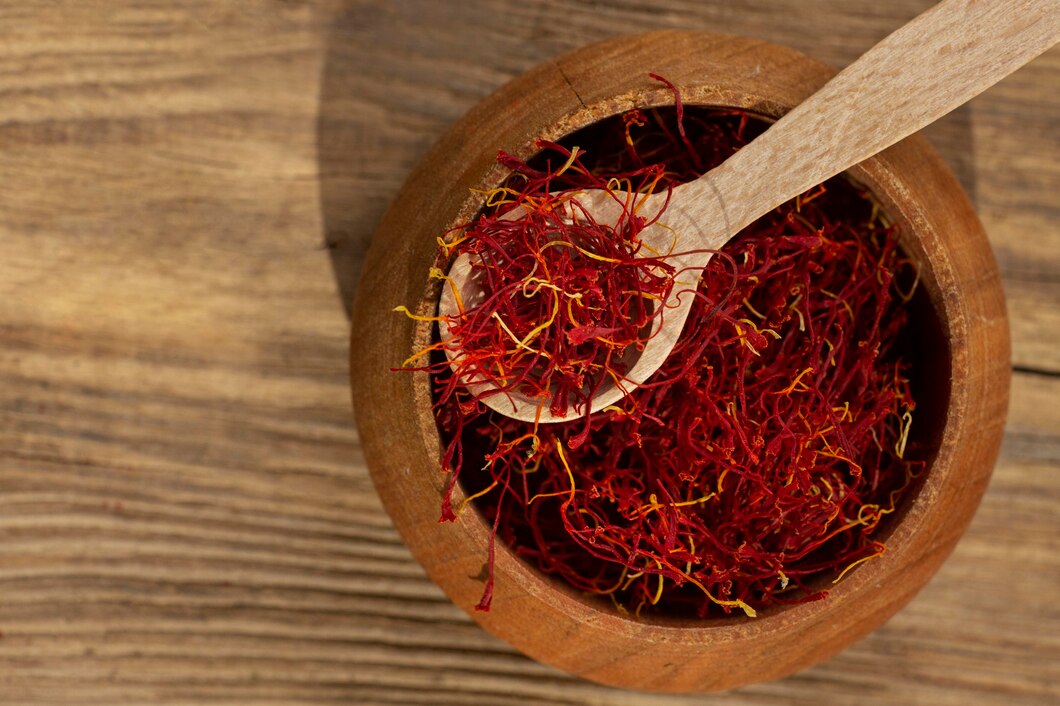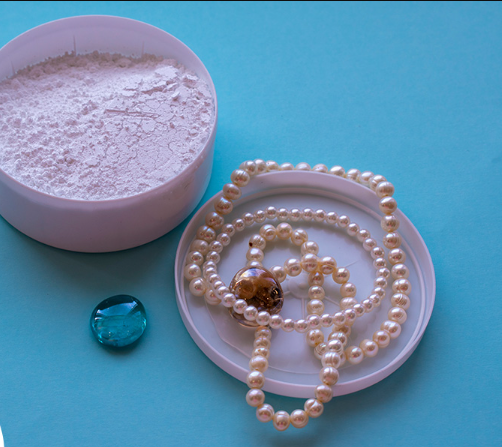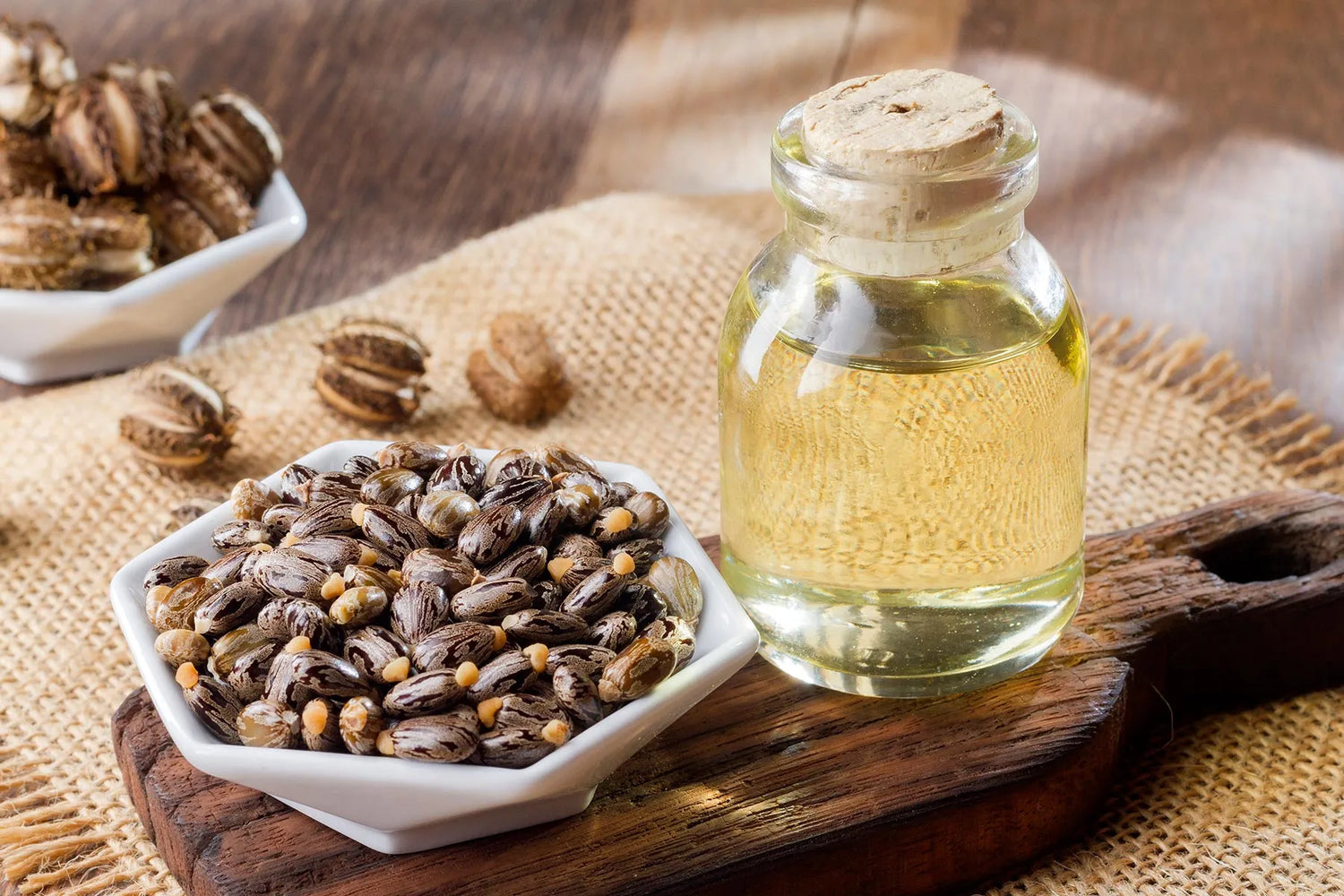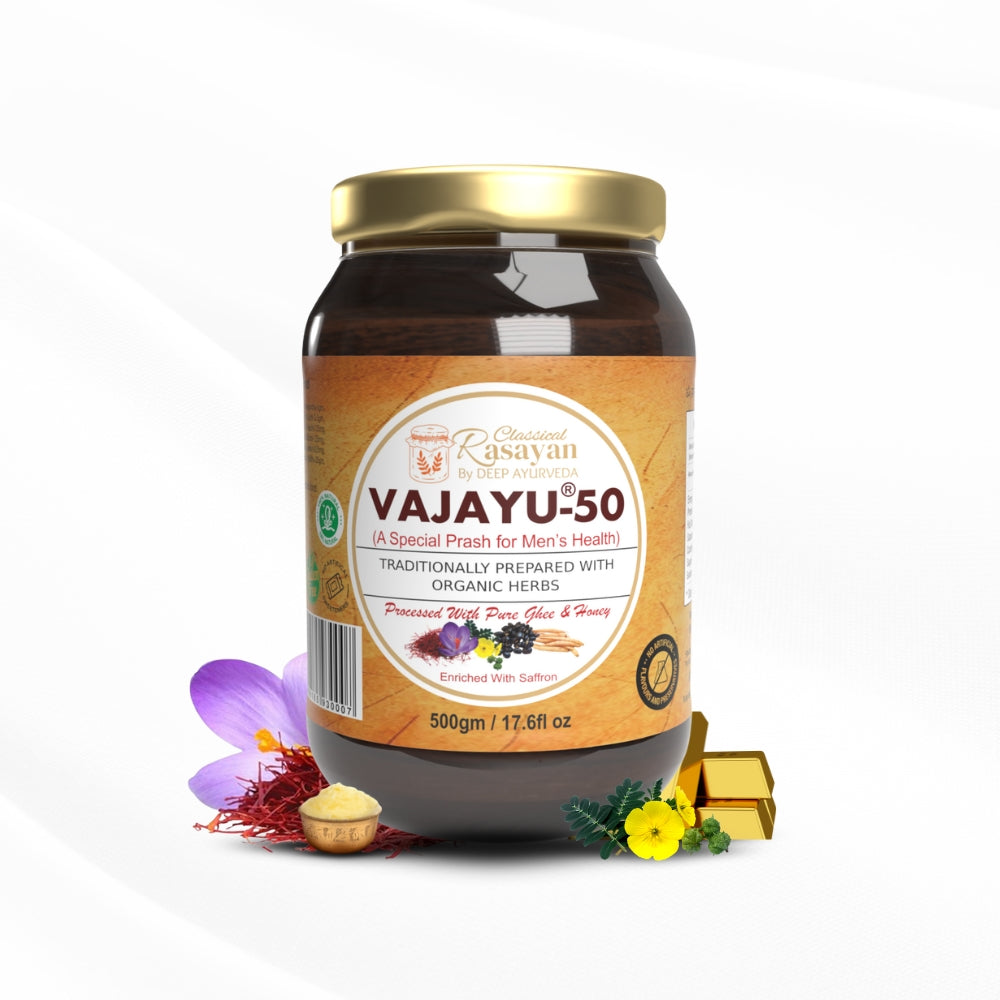समाचार
How an Ayurvedic Doctor Can Help Improve Your Health Naturally
Introduction Our modern lifestyle has given us comfort, but it has also brought many health problems. Stress, poor digestion, joint pain, and issues like PCOS are now very common. Irregular eating habits, busy routines, and pollution make these problems worse. Modern medicine gives quick relief, but it often doesn’t solve the real cause of illness. This is where Ayurveda, India’s ancient system of healing (more than 5000 years old), comes in. Ayurveda focuses on balance, prevention, and natural healing. It treats the root cause of disease instead of just hiding the symptoms. An Ayurvedic doctor plays a very important role in this process. They study your body type (Prakriti) and current imbalances (Vikriti) to guide you with diet, lifestyle, herbs, and detox therapies. And now, with online Ayurvedic doctor consultations, you can access authentic care easily—whether you are in Mohali, abroad, or anywhere in the world. How Ayurveda is Different from Modern Medicine Modern medicine usually focuses on treating symptoms. Ayurveda is different because it looks at your whole health and aims for long-term balance. Treats the Root Cause – Ayurveda checks which dosha (Vata, Pitta, Kapha) is disturbed and corrects it, preventing the illness from coming back. Natural & Safe Remedies – Herbal medicines, minerals, and natural formulations have no harmful side effects when used properly. Mind–Body–Spirit Balance – Ayurveda connects physical and mental health. It uses herbs, yoga, meditation, breathing practices, and lifestyle changes to restore harmony. Ayurveda is not just a treatment—it is a healthy way of living. Role of an Ayurvedic Doctor Everyone is unique, and Ayurveda respects this uniqueness. An Ayurvedic doctor gives personalized treatment, not one-size-fits-all solutions. Personalized Consultation – The doctor studies your health history, lifestyle, and habits. They may check your pulse, tongue, and ask detailed questions. Customized Treatment Plan – This can include: Herbal medicines like Ashwagandha, Triphala, or Shatavari. Specific diet plans to balance doshas. Detox therapies like Panchakarma (Basti, Virechana, Abhyanga). Lifestyle corrections, yoga, and meditation. This complete approach helps in long-term healing and prevents future diseases. Health Problems Ayurveda Can Help With Ayurveda works very well for today’s common health issues. At Deep Ayurveda Mohali, doctors provide care for: Digestive Health – Acidity, IBS, constipation, bloating. Herbs: Triphala, Jeera, Pippali. Joint & Muscle Health – Arthritis, back pain, sciatica. Herbs: Shallaki, Guggulu + therapies like Abhyanga. Women’s Health – PCOS, irregular periods, infertility, menopause. Herbs: Shatavari, Ashoka + detox. Mental Health – Stress, anxiety, depression, insomnia. Herbs: Brahmi, Ashwagandha + meditation and therapies. Skin & Hair Care – Acne, eczema, psoriasis, dandruff, hair fall. Herbs: Neem, Manjistha, Khadir. Men’s Vitality & Energy – Low stamina, weakness, reproductive health. Herbs: Ashwagandha, Safed Musli, Makardhwaj. Ayurveda for Prevention Ayurveda is not only for treating illness—it is also for staying healthy. Daily & Seasonal Routines – Simple habits like oil pulling, yoga, pranayama, and seasonal changes keep you fit. Immunity Boost & Detox – Herbs like Giloy, Amla, Tulsi improve immunity, while Panchakarma removes toxins. Healthy Lifestyle Guidance – Tips for better sleep, mindful eating, and stress control help you maintain balance every day. Benefits of Consulting an Ayurvedic Doctor Choosing Ayurveda means choosing natural and safe healing. Some key benefits are: Holistic care for body, mind, and spirit. Side-effect free treatments, safe for long-term use. Long-lasting results by correcting the root imbalance. Gentle and safe for children, adults, and elders. Easy access through online consultation, no matter where you live. Conclusion Ayurveda is not just medicine—it is a way of life that brings balance, energy, and well-being. An Ayurvedic doctor not only helps you recover but also prevents future diseases. If you are facing lifestyle problems, digestive issues, hormonal imbalance, or stress-related concerns, Ayurveda has safe and effective solutions for you. At Deep Ayurveda Mohali, our expert doctors have already helped thousands of patients worldwide with authentic Ayurvedic treatments, Panchakarma, and personalized care. Whether you visit our clinic or book an online consultation, we are here to guide you on your journey to natural healing. 👉 Choose Ayurveda. Choose health. Choose Deep Ayurveda.
Read moreसमाचार
Moringa Powder Benefits for Skin: A Natural Superfood for Healthy Glow
Moringa, often called the “drumstick tree” or “miracle tree”, has been celebrated in Ayurveda for centuries for its healing and rejuvenating properties. Today, it has gained global recognition as a superfood not only for overall health but also for radiant, youthful skin. Ayurvedic texts describe Moringa as Shigru, a herb with powerful detoxifying, nourishing, and anti-inflammatory qualities. Modern skincare enthusiasts now consider Moringa powder as one of the most effective natural remedies for achieving a healthy glow. In this blog, we’ll explore the Moringa Powder Benefits for Skin and why it deserves a place in your beauty and wellness routine. What is Moringa Powder? Moringa powder is derived from the dried leaves of the Moringa oleifera tree. These leaves are sun-dried and finely ground to create a nutrient-rich powder. Nutritional profile of Moringa powder: Rich in Vitamin A, C, and E – essential for skin repair and glow. Packed with antioxidants – protect skin cells from damage. Contains essential amino acids – vital for cell regeneration. Provides minerals like zinc and calcium – important for skin structure and hydration. Thanks to this rich nutrient profile, Moringa powder benefits extend beyond general wellness to making the skin healthy, youthful, and naturally radiant. Top Benefits of Moringa Powder for Skin Rich in Antioxidants – Fights Free Radicals Pollution, stress, and UV rays trigger free radical damage that leads to premature aging. The antioxidants in Moringa powder, especially Vitamin C and flavonoids, help neutralize these free radicals, preventing wrinkles, fine lines, and dullness. Anti-Inflammatory Properties – Reduces Acne & Blemishes One of the most valued Moringa Powder Benefits for Skin is its ability to soothe acne and blemishes. Its anti-inflammatory compounds reduce redness, swelling, and skin irritation, making it an excellent natural remedy for acne-prone skin. Deep Cleansing & Detoxifying Effect Moringa powder helps eliminate impurities, excess oil, and toxins that clog pores. Regular use as a face pack or cleanser results in clearer, fresher-looking skin. Boosts Collagen Production Collagen is the protein responsible for firm, youthful skin. With its high Vitamin C content, Moringa supports collagen synthesis, reducing sagging and fine lines while enhancing skin elasticity. Hydrates & Nourishes the Skin The essential nutrients, amino acids, and Vitamin E in Moringa deeply moisturize and nourish the skin from within, keeping it soft, supple, and glowing. Evens Skin Tone & Brightens Complexion Regular use of Moringa powder helps fight pigmentation, dark spots, and dullness. Its skin-brightening properties promote an even skin tone and natural radiance. How to Use Moringa Powder for Skin Face Packs & DIY Masks For acne-prone skin: Mix Moringa powder with rose water. For glowing skin: Combine with honey and yogurt. For pigmentation: Blend with turmeric and raw milk.As an Ingredient in Skincare Products Moringa is now widely used in creams, scrubs, soaps, and serums, thanks to its antioxidant and nourishing profile. Internal Consumption Adding Moringa powder to smoothies, teas, or capsules works from within, providing essential nutrients that reflect as a healthy skin glow. Precautions & Things to Keep in Mind Always do a patch test before applying Moringa on your face. Consume in moderation (½–1 tsp daily), as excess may cause digestive discomfort. Pregnant or lactating women, or those on specific medication, should consult a doctor before regular use. Why Choose Ayurvedic/Organic Moringa Powder For best results, choose pure, organic, and chemical-free Moringa powder. Ayurveda emphasizes the importance of natural, unadulterated herbs for maintaining Ojas (vitality) and skin radiance. Organic Moringa ensures you receive the maximum skin-healing nutrients without harmful additives. Conclusion From reducing acne and blemishes to brightening complexion and fighting signs of aging, the Moringa Powder Benefits for Skin are truly remarkable. Backed by Ayurvedic wisdom and modern science, Moringa stands tall as a natural superfood for glowing, youthful skin. Start adding Moringa powder to your skincare and wellness routine today — let nature give you the healthy, radiant skin you deserve!
Read more6 Common Myths About Ayurveda and the Truth Behind Them
Ayurveda is the ancient Indian system of treatment that is truly a treasure for our country, yet often undervalued by people. It is not just a medical system but a complete Shastra that teaches us how to live a healthy and balanced life. Unfortunately, due to several myths and misconceptions surrounding Ayurveda, many people are misguided and fail to understand its true essence and scientific approach. People often lack proper knowledge about Ayurveda and have developed many myths in their minds regarding it. In this blog, we will explore some of the most common myths about Ayurveda and uncover the true facts behind them. Myth no 1- Ayurveda Works Slowly Fact-The most common myth about Ayurveda is that it works slowly. In reality, Ayurveda does not work slow; instead, it works on the root cause of the disease. When treatment is done under a qualified Ayurvedic doctor by identifying the body type (Prakriti) and correcting the doshic imbalance, Ayurveda can give instant results. Many Panchakarma therapies such as Agnikarma, Viddhakarma, Marma therapy, and Raktamokshan provide immediate relief in pain. Ras Aushadhis (herbo-mineral medicines) are known to act quickly, even in chronic conditions. Basti Chikitsa offers fast pain relief while also addressing the root cause of nervous system disorders. Even common problems like acidity respond instantly to Ayurvedic medicines—for example, ENO, one of the most popular remedies for acidity in India, is based on Ayurvedic formulation, making it a perfect example of how Ayurveda can act fast. Myth no 2- Ayurveda means only Herbal Medicine Fact- This is one of the biggest myths about Ayurveda—that it only involves herbal medicines or jadibooti, as people commonly say. In reality, Ayurveda is a vast medical science that also includes specialized Ras Aushadhi (herbo-mineral medicines). These medicines are prepared from purified minerals and metals, processed through classical methods, and converted into Bhasma (nano-particle form). Because of their fine particle size, they have high potency, quick absorption, and faster results. Ras Aushadhi are widely used in Ayurveda to treat many chronic and complex diseases, where only herbal medicines may not be sufficient. Myth no 3- Ayurvedic Medicine Means Only Bitter Churnas Fact- This is another very common myth people still believe—that Ayurveda means only taking churnas (powders). In reality, Ayurveda has a wide range of medicines available in different forms such as tablets, syrups, capsules, oils, avaleha (like chyawanprash), and much more. With the help of modern technology, Ayurveda has evolved further, and today we even have Ayurvedic creams, cosmetics, shampoos, and health supplements. It is also a misconception that all churnas are bitter. In fact, Ayurveda classifies herbs according to different rasas (tastes)—some are sweet, some sour, some pungent, and not all are bitter. Thus, Ayurveda is not limited to churnas alone but offers a complete system of medicine in multiple convenient and effective forms Myth no 4- Ayurveda is a Pseudo Science and not Scientific Fact- Ayurveda is one of the oldest and most systematic medical sciences in the world, with a history of more than 5,000 years. It is based on well-documented principles like Tridosha theory (Vata, Pitta, Kapha), Agni (digestive fire), Dhatus (body tissues), and Srotas (channels). Ancient Ayurvedic texts such as Charaka Samhita and Sushruta Samhita describe detailed concepts of anatomy, physiology, pathology, diagnosis, and treatment. Modern research has validated Ayurvedic herbs and formulations for their pharmacological and therapeutic effects. Moreover, Ayurvedic Rasayana (rejuvenation therapy) and Panchakarma detox therapies are increasingly being studied and practiced worldwide. Ayurveda is not unscientific—it is a time-tested, evidence-based holistic science, now being re-validated through modern clinical research. For example, the most common Ayurvedic herb Haridra (Haldi/Turmeric) is described in classics as Kushtaghna (useful in skin diseases), Kandughna (relieves itching), Raktashodhak (blood purifier), Vranaropana (wound healer), and Yakrituttejak (liver stimulant). Modern research has also validated this, as turmeric is found to contain Curcumin, a powerful compound with antioxidant, anti-inflammatory, and healing properties. Chyawanprash, which is used by millions today for boosting health and immunity, is a classical Ayurvedic formulation made from a combination of multiple herbs processed through a scientific and standardized procedure. Its effectiveness is well-recognized across generations. If such time-tested and well-documented formulations exist, then Ayurveda can never be called a pseudo science. Myth no 5: Ayurvedic Medicines Have No Side Effects and herbs can be taken without guidance of Ayurvedic Doctor Fact- Ayurveda works on the fundamental concept of Tridosha – Vata, Pitta, and Kapha, and every herb acts differently depending on an individual’s body type and doshic imbalance. That is why even simple herbal medicines should always be taken under the guidance of a qualified Ayurvedic doctor. Many people consume commonly known herbs like Triphala or Ashwagandha on their own, assuming they are suitable for everyone. However, in some cases, these may cause issues like constipation, acidity, or discomfort if not prescribed according to one’s prakruti and current health condition. This often leads to the misconception that Ayurveda works slowly or causes side effects, whereas the real issue lies in self-medication without proper consultation. For example Some people experience body heat or acidity after taking Ashwagandha because in Pittaj prakruti individuals, long-term or high doses can aggravate Pitta. Hence, even Ayurvedic medicines should always be taken under proper doctor’s guidance. Myth no 6- All Ayurvedic Medicine Are “Heating” In Nature Fact-Another common myth is that all Ayurvedic medicines are “heaty” in nature. The fact is that Ayurveda is a highly scientific system where every herb and formulation is prescribed according to the individual’s body type (Prakriti) and the imbalance of doshas. Some medicines are indeed ushna (hot in potency), but many are sheeta (cooling) or madhya (neutral). For example, herbs like Amla, Giloy, and Shatavari are cooling in nature and are widely used to balance excess heat in the body. Therefore, it is wrong to generalize that all Ayurvedic medicines cause heat—when prescribed properly by an Ayurvedic physician, medicines balance the body rather than create imbalance. An Ayurvedic doctor always prescribes medicines according to your Prakruti and balances them with suitable herbs, so you will never be given only heating medicines. Conclusion Ayurveda arise from lack of awareness and half-knowledge. Ayurveda is not just about bitter churnas or jadibootis—it is a scientific, holistic, and time-tested medical system that includes herbal medicines, Ras Aushadhi, formulations like Chyawanprash, modern dosage forms, Yoga, Panchakarma therapies, and even surgical practices described by Acharyas like Sushruta. Ancient wisdom combined with modern research continues to prove the effectiveness and scientific basis of Ayurveda. Instead of labeling it as slow or pseudo-science, it is time we recognize Ayurveda as a treasure of health and healing that India has gifted to the world.
Read morePCOS Diet Chart: Balancing Hormones Naturally (Ayurvedic Guide)
Polycystic Ovary Syndrome (PCOS) is one of the most common hormonal disorders affecting women today, leading to irregular periods, weight gain, acne, hair fall, and fertility challenges. While modern medicine often focuses on symptom management, Ayurveda views PCOS as a result of dosha imbalance and poor digestion (Agni). Diet, therefore, becomes the cornerstone of natural healing. Following a well-designed PCOS diet chart can not only regulate hormonal balance but also improve metabolism, support fertility, and promote overall wellness. 👉 Along with a balanced diet, certain Ayurvedic formulations are highly beneficial for women’s hormonal and reproductive health. One such supplement is Naripanch , considered the best Ayurvedic chyawanprash for women, as it nourishes the body, strengthens immunity, and supports natural hormonal balance. Understanding PCOS from an Ayurvedic Perspective According to Ayurveda, PCOS is primarily linked to Kapha and Vata imbalance. Excess Kapha leads to weight gain, sluggish metabolism, and cyst formation, while aggravated Vata causes irregular cycles and hormonal fluctuations. Poor digestion (Mandagni) further contributes to toxin (Ama) buildup, which disrupts reproductive health. Ayurveda emphasizes diet, lifestyle, and stress management as natural ways to restore harmony and balance hormones. Key Principles of an Ayurvedic PCOS Diet Prefer warm, freshly cooked, and sattvic meals. Avoid processed, refined, and fried foods. Include seasonal fruits and vegetables. Favor whole grains like millets, quinoa, and brown rice. Use hormone-balancing spices: turmeric, cinnamon, cumin, fenugreek. Stay hydrated with herbal teas (cumin-coriander-fennel water, tulsi tea). Practice mindful eating – eat at regular intervals and avoid overeating. Ayurvedic PCOS Diet Chart (Daily Meal Plan) Early Morning: Warm lemon water or fenugreek seed water Herbal tea (cinnamon/ginger/tulsi) Breakfast: Vegetable upma, poha with curry leaves, or multigrain porridge Herbal tea instead of coffee Mid-Morning Snack: Seasonal fruit (papaya, guava, apple, pomegranate) Coconut water or buttermilk Lunch: Brown rice / millet roti with dal or moong khichdi Steamed vegetables with turmeric & cumin Fresh salad with lemon dressing Evening Snack: Roasted chana or nuts and seeds mix Tulsi-ginger tea Dinner (light & early): Moong dal khichdi, vegetable soup, or roti with sabzi Avoid heavy fried foods Before Bed: Warm turmeric milk (if suitable) 7-Day PCOS Diet Plan (Ayurvedic Approach) To make it easier, here’s a 7-day PCOS diet plan designed to balance hormones naturally: Day 1: Moong dal khichdi + steamed veggies + herbal tea Day 2: Millet roti with spinach sabzi + cucumber salad + buttermilk Day 3: Brown rice with dal tadka + broccoli stir fry + tulsi tea Day 4: Oats porridge with flaxseeds + papaya + lemon water Day 5: Vegetable upma with curry leaves + roasted nuts + green tea Day 6: Quinoa pulao with seasonal veggies + dal + salad Day 7: Light moong soup with roti + steamed bottle gourd + ginger tea Foods to Include in PCOS Diet (Ayurvedic View) Whole grains: oats, quinoa, millets Fruits: papaya, pomegranate, guava, apple Vegetables: spinach, bottle gourd, bitter gourd, broccoli Healthy fats: ghee, flaxseeds, sesame oil, nuts Herbs: ashwagandha, shatavari, turmeric, cinnamon Foods to Avoid in PCOS (Ayurvedic View) Junk and fried food Excess dairy and refined sugar White rice, maida, bread, pasta Cold drinks, packaged juices, carbonated beverages Canned and processed foods Lifestyle Tips Along with Diet Practice yoga asanas like butterfly pose, surya namaskar, and bhujangasana. Do pranayama (deep breathing, anulom-vilom) daily. Reduce stress with meditation and mindfulness. Maintain a regular sleep cycle (7–8 hours). Consider Ayurvedic therapies like Panchakarma under expert guidance. Conclusion Managing PCOS naturally is possible with the right balance of diet, lifestyle, and Ayurvedic practices. Following a personalized Ayurvedic PCOS diet chart not only helps regulate hormones but also supports overall reproductive health and well-being. Small changes in daily food choices, when followed consistently, can bring long-term relief. 👉 For a customized diet plan and Ayurvedic treatment, consult our Ayurvedic Doctor at Deep Ayurveda.
Read moreBest Shilajit Brand in India: Top Picks for 2025
Looking for the best Shilajit brand in India for 2025? This guide highlights the top picks based on purity, authenticity, and health benefits. Compare trusted brands to find the right Shilajit supplement that supports energy, stamina, and overall wellness.
Read moreTop 5 Ayurvedic Herbs For Liver Health
The liver is one of the body’s most vital organs, responsible for detoxification, digestion, and maintaining overall health. Ayurveda offers time-tested natural solutions to strengthen liver function. In this post, we explore the top 5 Ayurvedic herbs for liver health, their benefits, and how they help in cleansing toxins, improving digestion, and supporting long-term wellness.
Read moreAyurvedic Medicine for Premature Ejaculation: Natural Remedies & Treatment Guide
Vajayu Prash | Ayurvedic Medicine for Premature Ejaculation ✅1+ Lakh Customer Trust ✅ 100% Ayurvedic & Safe ✅ Boosts Energy & Strength ✅ Improves Stamina & Confidence ✅ Supports Hormonal Balance ✅ No Side Effect ₹1499.00 ₹1874.00 Buy Now Premature ejaculation (PE) is one of the most common yet least discussed concerns in men’s health. For many, it creates not just physical dissatisfaction but also emotional stress and strained relationships. While conventional treatments may offer temporary relief, Ayurveda focuses on long-term restoration of balance and vitality. In this article, we will explore Ayurvedic Medicine for Premature Ejaculation, its natural approach, home remedies, and the role of Vajayu® 50 Prash by Deep Ayurveda—a premium formulation crafted with 30 herbs, gold, saffron, and pure cow ghee, designed through 20 years of Ayurvedic expertise. What is Premature Ejaculation? Premature ejaculation happens when a man ejaculates sooner than he or his partner would like, often within a short period of sexual activity. Occasional early climax is not unusual, but when it becomes a pattern, it can affect confidence and intimacy. In Ayurveda, this condition is seen as a disturbance of Vata dosha combined with weakness of Shukra Dhatu (reproductive tissues). A man with weakened Shukra has reduced stamina, oversensitivity, and less control over ejaculation. This is why Ayurvedic Medicine for Premature Ejaculation focuses on nourishing tissues, strengthening nerves, and calming the mind. Why Ayurveda for Premature Ejaculation? Modern medicine often provides short-lived solutions, while Ayurveda looks deeper. By using a holistic approach, Ayurvedic Medicine for Premature Ejaculation works on: Rejuvenating Shukra Dhatu and improving stamina Reducing stress, anxiety, and performance pressure Balancing Vata dosha for better control Nourishing the nervous system Enhancing strength and energy naturally This makes Ayurvedic premature ejaculation treatment a path not just for quick relief but for sustainable confidence and well-being. Causes of Premature Ejaculation (Ayurveda View) According to classical Ayurvedic principles, the root causes include: Imbalanced Vata dosha – causing nervous system instability and hypersensitivity Weak reproductive tissues (Shukra Dhatu) – leading to poor stamina Anxiety and psychological stress – aggravating early climax Weak digestion (Agni & Ojas deficiency) – lowering vitality Overexertion & excess sexual activity – depleting Shukra Dhatu Unhealthy habits – alcohol, smoking, irregular food, poor sleep When these causes are addressed, premature ejaculation treatment becomes effective and long-lasting. Key Ayurvedic Herbs for Premature Ejaculation Ayurveda offers time-tested herbs that support men’s reproductive health. These include: Ashwagandha – Strengthens nerves, reduces anxiety, builds stamina Shilajit – Restores vitality and energy with essential minerals Safed Musli – Known as a natural aphrodisiac, enhances sexual vigor Kaunch Beej – Improves testosterone and enhances nerve strength Gokshura – Supports reproductive functions and hormonal balance Kapikacchu & Bala – Improve nerve health and control over ejaculation These botanicals form the backbone of many Ayurvedic Medicines for Premature Ejaculation, including advanced formulations like Vajayu® 50 Prash. Vajayu® 50 Prash – Deep Ayurveda’s Premium Formulation Among Ayurvedic solutions, Vajayu® 50 Prash is one of the most comprehensive and scientifically formulated remedies for men’s vitality. What Makes Vajayu® 50 Prash Unique? Developed after 20 years of Ayurvedic clinical practice Contains 30 carefully selected Ayurvedic herbs Enriched with Swarna Bhasma (Gold) for rejuvenation and immunity Blended with Kesar (Saffron) to uplift energy, mood, and stamina Prepared with pure cow ghee, ensuring deep tissue nourishment Based on Vajikarana Rasayana therapy principles of Ayurveda This combination makes it a powerful Ayurvedic Medicine for Premature Ejaculation, going beyond just symptom relief to rebuild long-term stamina and control. Benefits of Vajayu® 50 Prash in Premature Ejaculation Strengthens reproductive tissues (Shukra Dhatu) Improves control by reducing hypersensitivity of nerves Boosts stamina and energy naturally Calms the mind and reduces stress-related performance issues Acts as a Rasayana (rejuvenative) for overall men’s health For best results, it is recommended as a minimum 3-month course. Ayurvedic Therapies for Support Alongside herbal medicines, Ayurveda recommends therapies to support premature ejaculation treatment: Abhyanga (oil massage) – reduces stress and nourishes tissues Shirodhara – calms the nervous system and balances Vata Vasti (medicated enema) – strengthens reproductive and nervous systems Lifestyle & Diet for Better Results Ayurveda emphasizes a supportive lifestyle: Eat nourishing foods – milk, almonds, dates, ghee, pumpkin seeds Avoid toxins – smoking, alcohol, junk food Practice Yoga & Pranayama – Vajrasana, Anulom Vilom, and Bhramari Sleep well – restore Ojas and nervous system balance Manage stress – through meditation and mindful practices Home Remedies You Can Try Simple home-based remedies can enhance the effect of Ayurvedic Medicine for Premature Ejaculation: Ashwagandha milk at bedtime Dates and almonds soaked overnight Warm saffron-infused milk for stamina Honey with ghee as a natural tonic When to See a Doctor If premature ejaculation continues to cause distress, consult an Ayurvedic physician. A personalized plan including Vajayu® 50 Prash, therapies, and lifestyle corrections can provide lasting results. Conclusion Premature ejaculation is not just a physical issue—it impacts emotional well-being and relationships. Ayurveda offers a natural, safe, and sustainable way to regain control and vitality. Vajayu® 50 Prash from Deep Ayurveda represents the pinnacle of Ayurvedic Medicine for Premature Ejaculation—a classical yet modernized formulation blending 30 herbs, gold, saffron, and ghee. Crafted with two decades of expertise, it is more than a medicine—it is a complete rejuvenation therapy for men’s health. If you are looking for an authentic and effective premature ejaculation treatment, Ayurveda and Vajayu® 50 Prash provide a trusted solution for long-term stamina, confidence, and holistic well-being.
Read moreShatavari Uses for Female With Deep Ayurveda
When it comes to women’s health, Ayurveda has always offered natural and effective solutions. One such powerful herb is Shatavari (Asparagus racemosus). It is highly valued for balancing hormones, supporting reproductive health, and boosting overall vitality in women. In this blog, we’ll explore Shatavari Uses for Female, how to take it, and its Ayurvedic importance. What is Shatavari? Shatavari, botanically known as Asparagus racemosus, is a Rasayana (rejuvenating herb) mentioned in classical Ayurvedic texts. It is especially known for its cooling, nourishing, and balancing properties. Traditionally, it has been used to strengthen the female reproductive system, promote lactation, and improve fertility. From menarche (onset of menstruation) to menopause, Ayurveda recommends Shatavari for supporting women in different stages of life. Ayurvedic Perspective on Shatavari In Ayurveda, Shatavari is classified as a balya (strength-promoting), stanya-janana (increase breast milk production), and rasayana (rejuvenator) herb. It pacifies Vata and Pitta doshas while nourishing Shukra dhatu (reproductive tissue). This makes it one of the most essential herbs for women, especially during phases of hormonal shifts such as puberty, pregnancy, postpartum, and menopause. From an Ayurvedic Perspective on Shatavari, it is not just a medicine but a daily tonic for women’s vitality and emotional balance. Shatavari Uses for Female Health Here are some key benefits of this wonder herb: Hormonal BalanceShatavari helps regulate estrogen and progesterone levels naturally, making it useful for irregular periods, PMS symptoms, and menopausal issues. Fertility & Reproductive HealthIt nourishes the reproductive organs and improves ovulation, thereby supporting fertility. Menopause SupportHot flashes, mood swings, and dryness during menopause can be eased with Shatavari due to its cooling and lubricating qualities. Boosts LactationAyurveda prescribes Shatavari for new mothers as it improves breast milk production. Stress & Energy SupportIt acts as an adaptogen, helping women manage stress, fatigue, and weakness while boosting immunity. By including Shatavari in your routine, you can experience the full package of Shatavari Uses for Female health in a holistic manner. How to Use Shatavari for Women There are different ways to consume Shatavari depending on your health needs and convenience: Shatavari Powder (Churna) – Mix 1 tsp with warm milk or lukewarm water. Traditionally, it is taken with ghee or honey for better absorption. Shatavari Capsules/Tablets – Easy and convenient for daily use. Ayurvedic Formulations – Deep Ayurveda’s Naripanch formulation is specially designed for women’s hormonal balance and reproductive health, containing Shatavari along with other synergistic herbs. Shatavari Syrup – Suitable for women who prefer liquid formulations for digestion and absorption. When deciding How to Use Shatavari for Women, always consult an Ayurvedic practitioner to find the right dosage and form according to your body type and health condition. Final Thoughts From ancient times to modern wellness practices, the relevance of Shatavari has remained strong. With its ability to balance hormones, strengthen reproductive health, and rejuvenate the body, it stands out as a true “female-friendly” herb. If you are seeking natural solutions for women’s health, exploring Shatavari Uses for Female through Deep Ayurveda’s authentic formulations can be a safe and effective step toward holistic well-being.
Read moreTwak Detox Capsule – Ayurvedic Cure for Skin Diseases
Skin is the largest organ of our body, and maintaining its health has become a growing concern in today’s world. With increasing unhealthy food habits, stress, and poor lifestyle choices, skin issues such as acne, pimples, pigmentation, psoriasis, and eczema have become very common, especially among the younger generation. In Ayurveda, there are hundreds of powerful aushadhis (herbal medicines) that work on cleansing and nourishing the skin from within. Inspired by these traditional formulations, Deep Ayurveda has developed Twak Detox Capsules — a unique blend of skin-purifying herbs that help detoxify the blood, balance doshas, and promote healthy, clear, and glowing skin naturally. What is Twak Detox Capsule Twak Detox Capsule is a unique Ayurvedic formulation by Deep Ayurveda designed to purify and rejuvenate the skin from within. It is made from a combination of potent herbs known in Ayurveda for their rakta shodhana (blood-purifying) and twak prasādana (skin-enhancing) properties.Twak Detox Capsule is a 100% vegan Ayurvedic formulation by Deep Ayurveda, crafted without the use of any animal-derived ingredients. Key Ingredients in Twak Detox Capsule Manjistha (Rubia cordifolia)-Manjistha is a potent Ayurvedic herb that purifies the blood and balances Pitta, helping to clear acne, blemishes, and pigmentation.It nourishes the skin from within, promoting a healthy, radiant, and even-toned complexion. Neem (Azadirachta indica)-Neem is a powerful Ayurvedic herb that detoxifies the blood and fights bacterial, fungal, and inflammatory skin conditions.It helps clear acne, soothe irritation, and promote healthy, blemish-free skin naturally. Bakuchi (Psoralea corylifolia)-Bakuchi is an Ayurvedic herb known for its skin-rejuvenating and pigmentation-reducing properties.It helps manage conditions like vitiligo, psoriasis, and eczema while promoting an even skin tone. Haridra (Curcuma longa)-Haridra (Turmeric) is a renowned Ayurvedic herb with strong anti-inflammatory and antioxidant properties that purify the blood.It helps reduce acne, scars, and skin infections while enhancing natural glow and complexion. Giloy (Tinospora cordifolia)-Giloy is a powerful Ayurvedic herb that detoxifies the body and boosts immunity, helping prevent recurring skin issues.It purifies the blood, reduces inflammation, and promotes clear, healthy, and radiant skin. Amla (Phyllanthus emblica)-Amla is rich in vitamin C and antioxidants, helping to purify the blood and boost collagen for healthy skin. It reduces pigmentation, delays signs of aging, and promotes a natural, , radiant glow. Bhringraj (Eclipta prostrata)-Bhringraj nourishes and rejuvenates the skin by improving blood circulation and supporting detoxification. It helps reduce dullness, promotes a healthy glow, and slows down visible signs of aging. Benefits Of Twak Detox Capsules 1. Purifies Blood 2. Effective in acne, eczema, psoriasis, urticaria, and other chronic conditions 3. Improves Skin Glow 4. Supports Liver Health 5. Acts as antibacterial antifungal 6 .cures pimples and acne 7. Reduces skin inflammation & allergies 8 .Enhances overall skin texture Why Choose Twak Detox Capsule for skin disorders and for healthy skin? 1. Used higher concentrated and standardized herbal extracts 2. Formulated by qualified and experienced Ayurvedic Doctors 3. No added synthetic colours ,chemicals ,and artificial flavouring agents 4. GMP certified and USFDA registered manufacturing units 5. 100% vegetarian capsules 6. Herbal Medicine with no adverse effects Conclusion Use Twak Detox Capsule for your skin disorders instead of relying on chemical-based medicines and steroids that may cause harmful side effects. This Ayurvedic formulation heals your skin naturally by purifying the blood, removing toxins, and balancing aggravated doshas. Whether you are struggling with pimples, acne, eczema, or other skin issues, Twak Detox works from within to address the root cause rather than just masking symptoms. Go natural, protect your skin, and restore its healthy glow with the power of Ayurveda.
Read moreSaffron benefits for female and Male : Natural Remedy for Hormonal Balance and Stress Relief
Saffron, which is one of the expensive spices in India, often referred as “red gold”. It has been treasured for centuries not just for its flavour and colour, but for its remarkable health benefits. Current studies and research now supports Saffron benefits for male and female as a natural remedy for hormonal balance and stress relief. Active Compounds in Saffron The health benefits of saffron come from its unique bioactive compounds: Crocins – Powerful antioxidants that protect cells from oxidative stress and support brain health. Picrocrocin – Gives saffron its distinct taste and contributes to mood regulation. Safranal – Responsible for saffron’s aroma, it also plays a role in reducing anxiety and improving mood. Kaempferol – A flavonoid that supports hormonal health and reduces inflammation. Why Saffron Works as a Natural Remedy for Hormonal Balance and Stress Relief Saffron benefits for female and male health go beyond its culinary use. The bioactive compunds of Saffron helps to regulate serotonin and dopamine — the brain chemicals responsible for mood, motivation, and emotional stability. This makes Saffron a natural remedy for stress relief, anxiety, and mild depression. Saffron benefits for Female Saffron benefits for females is especially valuable in case of: Menstrual Discomfort Relief – Saffron may help reduce mood swings, irritability, and cramps. Fertility Support – Helps regulate menstrual cycles and may improve reproductive health. Menopause Support – Eases hot flashes, anxiety, and sleep disturbances. Saffron benefits for Male Saffron benefits for male includes that it- Improves Mood & Reduces Stress – Helps fight fatigue and mental burnout. Supports Testosterone Levels – May enhance vitality and energy. Improves Libido – Traditionally used as a natural aphrodisiac. How Much Saffron to Take? The recommended safe daily dose is: About 3–5 strands) for general health benefits. Can be taken for up to 12 weeks in clinical studies without side effects. Always choose pure, high-quality saffron from trusted sources to ensure maximum saffron benefits. How to Take Saffron Saffron is best consumed in a way that preserves its active compounds: Warm Milk or Herbal Tea – Soak 3–5 strands in warm milk/water for 10 minutes before drinking. With Honey – Mix saffron strands in a teaspoon of honey for hormonal and stress benefits. In Food – Add to kheer, vermicilli for both flavour and health. Ayurvedic Formulations- Deep Ayurveda offers formulation such as Vajayu Prash, Vajayu Resin for males which has been enriched with Saffron benefits and other herbs for hormonal balance of males. Final Takeaway Saffron isn’t just a luxury spice, it’s a time-tested Ayurvedic remedy for balancing hormones, calming the mind, and supporting overall health for both male and female. But because it’s expensive and often adulterated, so always prefer buying Saffron from trusted, authentic and certified sources to enjoy Saffron benefits.
Read moreHealing Rheumatic Fever Naturally with Deep Ayurveda
Introduction Rheumatic Fever (RF) is a post-infectious autoimmune inflammatory disorder that typically follows untreated Group A Streptococcal (GAS) pharyngitis. While modern medicine provides symptomatic relief through antibiotics and anti-inflammatory medications, Ayurveda offers a deeper understanding, focusing on the underlying metabolic dysfunction (Āma), Doṣa vitiation, and systemic immune dysregulation. At Deep Ayurveda, we adopt an integrative treatment strategy rooted in classical Ayurvedic principles—aiming not only for symptom control but also for detoxification, immune modulation, and long-term prevention of recurrence. Understanding Rheumatic Fever in Modern Medicine What is Rheumatic Fever? Rheumatic Fever is an autoimmune sequel to a streptococcal throat infection, wherein the immune system mistakenly targets the body’s own tissues—particularly the joints, heart, skin, and central nervous system. This leads to inflammation and, if untreated, may result in permanent cardiac damage known as Rheumatic Heart Disease (RHD). Causes and Risk Factors Primary Cause: Group A beta-hemolytic streptococcal infection (GAS pharyngitis) Risk Factors: Age group 5–15 years Poor hygiene and overcrowding Recurrent untreated throat infections Genetic predisposition Symptoms Based on Jones Criteria Major Criteria Carditis: Inflammation of heart valves, myocardium, and pericardium Migratory Polyarthritis: Pain and swelling moving from joint to joint Sydenham’s Chorea: Jerky, involuntary movements Erythema Marginatum: Characteristic pink skin rash Subcutaneous Nodules: Painless, firm lumps under the skin Minor Criteria Fever Arthralgia (joint pains) Elevated ESR, CRP ECG changes: Prolonged PR interval Diagnostic Investigations Throat Swab Culture Anti-streptolysin O (ASO) titre Echocardiography, Electrocardiogram (ECG) Inflammatory markers: ESR, CRP Treatment Approach in Modern Medicine Antibiotics: Long-term penicillin prophylaxis Anti-inflammatory Drugs: Aspirin, NSAIDs, corticosteroids Heart Protection: Diuretics, ACE inhibitors in carditis Monitoring for Rheumatic Heart Disease (RHD) 🌿 Ayurvedic Perspective on Rheumatic Fever Ayurvedic Correlation of Rheumatic Fever In Ayurvedic terms, Rheumatic Fever corresponds to a combination of Āmavāta, Jwara, and Hr̥drogaja Vikāra. It results from impaired Agni (digestive fire), leading to Āma formation (metabolic toxins) and vitiation of Vāta and Kapha doṣas. These toxins circulate and lodge into the joints, heart, and neurological tissues, triggering systemic inflammation. 🔸 "ज्वरः सर्वरोगाणां प्रधानं उच्यते।" – Fever is considered the root of many systemic disorders. (Charaka Saṁhitā, Sūtrasthāna 18/44) Ayurvedic Causative Factors (Nidāna) Mandāgni (weakened digestion) Ajīrṇa (indigestion) causing Āma formation Viruddhāhāra (incompatible food combinations) Excessive intake of heavy, unctuous, and cold foods Suppression of natural urges Emotional stress and sedentary lifestyle 🔸 "सञ्चितं कफवातेन सह संमिलितं रसे। समुत्पन्नं हि तदामं सन्धिषु जनयेत् रुजम्॥" (Mādhava Nidāna, Āmavāta 25/1) Ayurvedic Symptoms (Lakṣaṇa) Symptoms Mimicking Āmavāta Fever with chills and migrating joint pain Sandhi Śūla (joint pain) and Śopha (swelling) Stabdhata (joint stiffness), Angamarda (body ache) Aruchi (loss of appetite) and Apakti (indigestion) Cardiac Symptoms Mimicking Hr̥drogaja Vikāra Hr̥daya Śūla (chest pain), Śvāsa (dyspnea) Bhrama (giddiness) and Hr̥daya Spandana (palpitations) Ayurvedic Diagnostic Principles Doṣa: Vāta-Kapha predominance Dūṣya: Rasa, Rakta, Māmsa, and Asthi Dhātus Srotas: Raktavaha, Mānsavaha, and Prāṇavaha Srotas Nadi Parīkṣa: Indicative of Saama (toxic) Vāta-Kapha pulsation Jwara Classification: Saamajvara with associated Āmavāta traits Ayurvedic Line of Treatment (Chikitsā Sūtra) The goal is Āmapācana (digestion of toxins), Doṣa Shamana, strengthening of Agni, and rejuvenation of Dhātu and Ojas. Step 1 – Āmapācana (Toxin Digestion) Herbs and Formulas Śuṇṭhī (Zingiber officinale), Gudūcī (Tinospora cordifolia) Āmavatārika Kashayam, Ajmodādi Churna, Vaishvānara Churna Step 2 – Vāta-Kapha Doṣa Shamana Yogarāj Guggulu, Simhanāda Guggulu, Rāsnādi Kwātha Herbs with Kaṭu (pungent) and Tikta (bitter) rasas for inflammation modulation Step 3 – Anti-inflammatory & Shothahara Therapy Dashamūla Kwātha, Maharasnādi Kwātha Eranda Mūla Taila for local swelling and stiffness Step 4 – Hr̥dya Chikitsā (Cardiac Protection) Arjuna Kṣīra Pāka for cardiac tonicity Hr̥dayārṇava Rasa, Punarnavādi Mandura for managing cardiac inflammation and anemia Step 5 – Rasāyana (Rejuvenation Therapy) Chyavanaprāsha Avaleha, Āmalakī Rasāyana Ashwagandhādi Lehya for rebuilding tissue strength and immune balance Step 6 – Panchakarma Therapies Recommended Panchakarma Protocols Snehana (oleation): Mahanārāyaṇa Taila or Dhanvantaram Taila abhyanga Swedana (sudation): Nādi Sweda for joint detox Basti (medicated enema): Dashamūla Nirūha Basti, Nirgundi Taila Anuvāsana Basti 🔸 "वातं कफं च यद्यस्ति ज्वरे तीक्ष्णैर्विलायनैः। तिक्तं कटुं च सेवितव्यं कफज्वरेषु सम्मतम्॥" (Charaka Cikitsāsthāna 3/124) : Ayurvedic Remedies for Rheumatic Fever at a Glance Condition Remedy Fever with Āma Āmavatārika Kashayam, Gudūcī Churna Joint Pain & Swelling Yogarāj Guggulu, Simhanāda Guggulu Cardiac Inflammation Arjuna Kṣīra Pāka, Hr̥dayārṇava Rasa Systemic Inflammation Dashamūla Kwātha, Rasnā Saptaka Kwātha Immunity & Ojas Promotion Chyavanaprāsha, Āmalakī Rasāyana Ayurvedic Diet & Lifestyle Recommendations Pathya (Wholesome Guidelines) Warm, easily digestible meals like Yavāgu (gruel), Mudga yūṣa (green gram soup), and Takra (buttermilk) Herbal decoctions with Gudūcī, Rāsnā, Dashamūla Adequate rest and mental peace Regular Abhyanga and warm water intake Apathya (Avoidable Practices) Cold, heavy, fermented, or oily foods Exposure to cold and damp weather Daytime sleeping, night-time wakefulness Emotional stress and physical overexertion Why Choose Deep Ayurveda for Rheumatic Fever Treatment? Deep Ayurveda, a leading Ayurvedic centre in Mohali, Panchkula, and Chandigarh, offers advanced and authentic Ayurvedic care for Rheumatic Fever and related autoimmune disorders. Our Distinctive Strengths ✅ Ayurveda physicians trained in autoimmune, cardiac, and pediatric diseases ✅ WHO-GMP-certified proprietary medicines & classical formulations ✅ Customized Panchakarma protocols under expert supervision ✅ Evidence-based integrative diagnosis aligning Ayurvedic and modern tests ✅ Personalized diet, detox, and Rasāyana strategies for long-term immunity Conclusion: Embrace Holistic Healing with Deep Ayurveda Modern medicine addresses Rheumatic Fever symptomatically, but often falls short in preventing relapses and restoring systemic balance. Ayurveda, through its time-tested methods of Āmapācana, Doṣa Shamana, Rasāyana, and Panchakarma, offers a comprehensive, root-cause-based healing pathway. If you or your loved one is struggling with recurrent joint pain, cardiac inflammation post-strep infection, or unexplained fevers, consult Deep Ayurveda for an authentic, classical Ayurvedic solution.
Read moreMukta Pishti: A Natural Calcium Supplement with Cooling Benefits
When people think of Ayurveda, they often associate it only with herbal remedies. However, Ayurveda is much broader and includes a specialized branch known as Rasashastra, which deals with the purification and processing of minerals and gems. These substances are meticulously converted into fine, nano-particle powders called Pishti—highly potent, easily absorbable Ayurvedic formulations. One such powerful Pishti is Mukta Pishti, made from purified pearls. Known for its cooling, calming, and rejuvenating properties, Mukta Pishti offers therapeutic benefits that go beyond conventional herbal medicine. In this blog, we will explore the preparation, benefits, and uses of Mukta Pishti in Ayurvedic healing. What is Mukta Pishti Mukta Pishti is an Ayurvedic formulation made from purified pearls (Mukta). It is prepared through an intricate process involving purification (shodhana) and grinding (marana) of pearls with rose water, resulting in a fine, cooling, and easily absorbable nano-calcium compound. Properties of Mukta मुक्ता शुभ्रा स्थिरा चिक्का स्निग्धा शीता प्रियदर्शना। मधुरा लघुरप्युष्णा रक्तपित्तहरा परा॥Rasaratna Samuccaya – Chapter 24 (Ratnavarga) Mukta (pearl) is white, smooth, stable, unctuous, cooling, and pleasing in appearance.It has a sweet taste, is light, and mainly pacifies Pitta and Rakta (blood).It is highly effective in raktapitta (bleeding disorders), heart diseases, fever, mental agitation, and acid-peptic disorders. Rasa (Taste): Madhura (Sweet)Virya (Potency): Sheeta (Cooling)Vipaka (Post-digestive effect): MadhuraGuna: Laghu (Light), Snigdha (Unctuous)Effect on Doshas: Balances Pitta and Vata Preparation of Mukta Pishti The classical process of Mukta Pishti preparation involves: Shodhana (Purification) – Pearls are purified using acidic mediums like lemon juice or sour buttermilk to remove impurities.Grinding (Pishti Karana) – The purified pearls are finely ground with Gulab Jal (rose water) in a mortar and pestle under sunlight.Pishti Formation – Continuous trituration (grinding) for several hours results in a fine white paste that is then dried and powdered. Benefits of Mukta Pishti 1.Acts as Antacid and gives Digestive Relief Mukta Pishti has natural cooling (Sheetal) and alkaline nature that helps reduce burning sensations in the stomach and chest, while its mild astringent and sweet (Madhura) rasa supports mucosal healing and relieves discomfort. Unlike chemical antacids, Mukta Pishti works gently on the system and also balances Pitta dosha, the root cause of many acid-related digestive disorders in Ayurveda. 2. Natural Calcium Supplement Mukta Pishti serves as an excellent natural source of bioavailable calcium in Ayurveda. Made from purified pearls, it contains high-quality calcium carbonate in a finely processed form that is easily absorbed by the body without causing heaviness or constipation like some synthetic supplements. This makes it particularly beneficial for strengthening bones and teeth, supporting joint health, and preventing calcium deficiency disorders such as osteopenia or osteoporosis. 3. Skin Benefits Mukta Pishti offers remarkable benefits for skin health due to its cooling, detoxifying, and Pitta-pacifying properties. In Ayurveda, excessive Pitta is often responsible for skin issues like acne, rashes, inflammation, burning sensations, and rosacea. Mukta Pishti helps calm the internal heat, purify the blood, and reduce skin sensitivity and redness. Its rich mineral content and natural calcium also contribute to skin regeneration, improved texture, and a radiant complexion. Regular use under proper guidance can support healing of chronic skin conditions such as urticaria, eczema, and allergic reactions. 4. Heart Health & Emotional Calm Mukta Pishti is highly valued in Ayurveda for promoting both heart health and emotional balance. Its natural cooling and Pitta-shamak (Pitta-pacifying) qualities help calm the mind, reduce irritability, and alleviate stress-related symptoms like palpitations and anxiety. It acts as a cardiac tonic, strengthening the heart muscles and supporting healthy circulation. 5. Beneficial in Pitta Disorders With its Sheetal (cooling) potency and Madhura (sweet) taste, it directly pacifies aggravated Pitta dosha, which is often responsible for conditions involving heat, inflammation, acidity, and emotional disturbances. It is especially beneficial in pittaj disorders like Amlapitta (acid reflux), Raktapitta (bleeding disorders), hyperacidity, burning sensations, and inflammatory skin conditions like psoriasis,eczema,urticaria,Migraine. By calming excess heat in the body and mind, Mukta Pishti supports overall balance and prevents the progression of Pitta imbalances into chronic disease. 6. High Potency, Fast Absorption Prepared through the traditional Ayurvedic process of Bhavana (triturating with rose water) and Shodhana (purification), the pearl is converted into a micro-fine, nano-particle form. This allows it to be easily absorbed at the cellular level, ensuring quick action even in very small doses. Unlike conventional mineral supplements, which can be heavy on digestion or slow to act, Mukta Pishti works gently and efficiently—making it ideal for patients who need fast-acting yet safe solutions. Dosage and Anupan (Vehicle) Dose: 125 mg to 250 mg once or twice dailyAnupan (vehicle): Honey, rose water, milk, or ghee – depending on conditionAlways taken under the guidance of an Ayurvedic physician Conclusion Mukta Pishti is a gem among Ayurvedic formulations—literally and therapeutically. With its cooling, calming, and rejuvenating properties, it stands as a valuable remedy for heart, mind, bones, and digestive health. However, as with any Rasaushadhi (mineral-based medicine), it must be used judiciously under expert supervision.
Read moreCastor Oil (Erand Tail) – Benefits & Healing Uses
Ricinus communis or castor plant is a widely traditionally used and potent medicinal plant amongst all the thousands of medicinal plants. Castor oil is a vegetable product extracted from Ricinus communis (castor seed). Eranda Taila (Castor oil) is a wonderful Ayurvedic herbal oil which can rejuvenate the body and can be administered in many ways. Its unique qualities make it a go-to natural solution in many health and beauty regimens. Properties of Castor Oil- Botanical Name: Ricinus communis Family: Euphorbiaceae Rasa (Taste): Katu (Pungent), Tikta (Bitter), Madhura (Sweet)Guna (Qualities): Snigdha (Unctuous), Guru (Heavy), Sara (Spreading), Picchila (Sticky)Veerya (Potency): Ushna (Hot in potency)Vipaka (Post-digestive effect): Katu (Pungent)Dosha Karma (Effect on Doshas):Vatahara (Balances Vata)Kaphahara (Balances Kapha) Benefits Of Castor Oil- 1. In Vataj Rog -Erand Tail (Castor Oil) is a highly effective Ayurvedic remedy for managing various Vata disorders such as Rheumatoid Arthritis (Amavata), Dysmenorrhea (Kashtartava), and Constipation (Vibandha). In Rheumatoid Arthritis, Erand Tail works as an anti-inflammatory agent that reduces joint pain and stiffness and can be used both orally and in Basti karma (medicated enema).In Dysmenorrhea, it acts as a natural antispasmodic and vaat anuloman dravya, easing painful menstrual cramps and promoting smoother flow. 2. Liver Detoxification-Castor oil (Erand Tail) is valued in Ayurveda for its powerful detoxifying and cleansing properties, especially in relation to the liver and digestive system. It possesses tikshna (penetrating), ushna (heating) and virechaka (purgative) qualities, which help stimulate the liver and promote the removal of ama (toxins) from the body. When taken in appropriate doses, castor oil enhances bile flow, supports liver function, and clears accumulated waste from the intestines .It is often used in Ayurvedic Panchakarma therapies, particularly Virechana karma, to expel deep-seated toxins and restore digestive fire (agni). Castor oil thus serves as a natural liver cleanser, improving metabolism. 3.Promotes Hair Growth- Rich in ricinoleic acid and omega-6 fatty acids, castor oil boosts blood circulation to the scalp, strengthens roots, and promotes healthy hair growth. It also reduces dandruff and split ends. 4. Nourishes Dry Skin- Castor oil is a natural humectant that deeply moisturizes the skin, reduces inflammation, and heals dry, flaky patches.Rich in ricinoleic acid, it deeply moisturizes dry, rough, or flaky skin, making it ideal for Vata-type (dry)skin conditions. 5. Natural Laxative- Ayurveda recommends castor oil as a mild yet effective purgative (Virechana karma) to cleanse the colon and relieve chronic constipation. Ayurveda Reference of Erand Tail(Castor Oil)- एरण्ड तैलं वातघ्नं स्नेहनं च अति श्रेष्ठम् | सर्ववातविकारेषु पथ्यं चैव सततम् ||Bhaishajya Ratnavali – Amavata Chikitsa (Chapter 29) Castor oil is excellent for pacifying Vata dosha and is considered one of the best for internal oleation. It is beneficial and suitable in all Vata disorders. एरण्ड तैलं मधुरं स्निग्धम् उष्णं वातहरं परम् | विरेचनं च पित्तस्य बद्धपुरीषनाशकृत् ||Charaka Samhita – Siddhi Sthana (4/9) Eranda Tail is sweet, unctuous, hot in potency, highly effective in pacifying Vata, and works as a purgative to eliminate vitiated Pitta and hardened stools. एरण्डमूलं वृष्यवातहराणाम्॥ (च.सू २५) From all the herbs which have the capability for pacifying vata dosha and are aphrodisiac in nature, eranda is the best. Disorders in which Erand Tail(Castor Oil) is Beneficial- 1. Rheumatoid Arthritis 2. Osteoarthritis 3. Sciatica 4. Stiffness and muscular spasm 5. Gall Bladder Stones 6. Constipation 7. Piles 8. gas 9. Dysmenorrhea 10. Fatty Liver 11. Melasma 12. Dry Skin 13. Hairfall or thin hair 14. Jaundice 15. Ascites Conclusion- Castor oil is truly a multi-purpose Ayurvedic remedy with profound benefits for internal and external health. Regular use of castor oil nourishes the skin from within, supports tissue regeneration, and delays signs of aging, making it a natural and holistic solution for maintaining soft, healthy, and youthful skin. It also supports hair growth and liver detoxification. Whether applied topically or taken under guidance, castor oil is a timeless Ayurvedic tool for holistic health.
Read more


